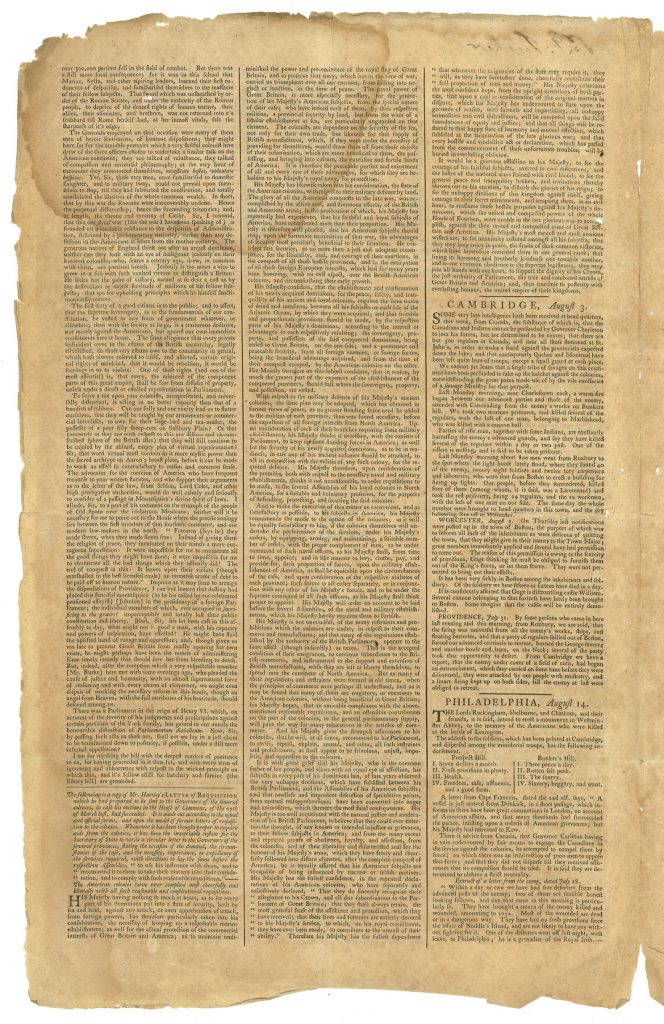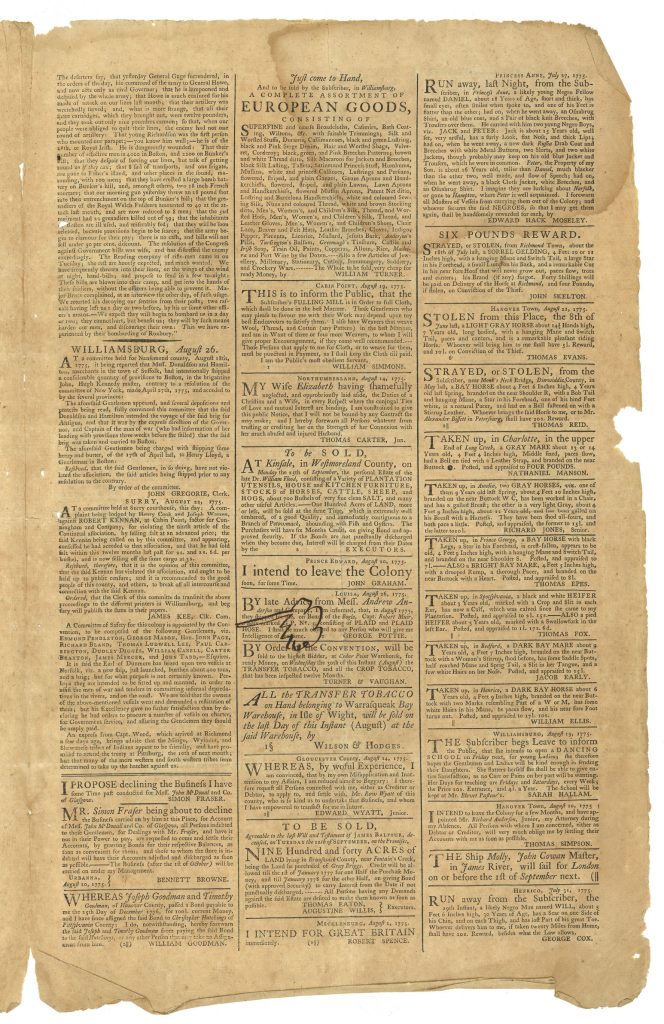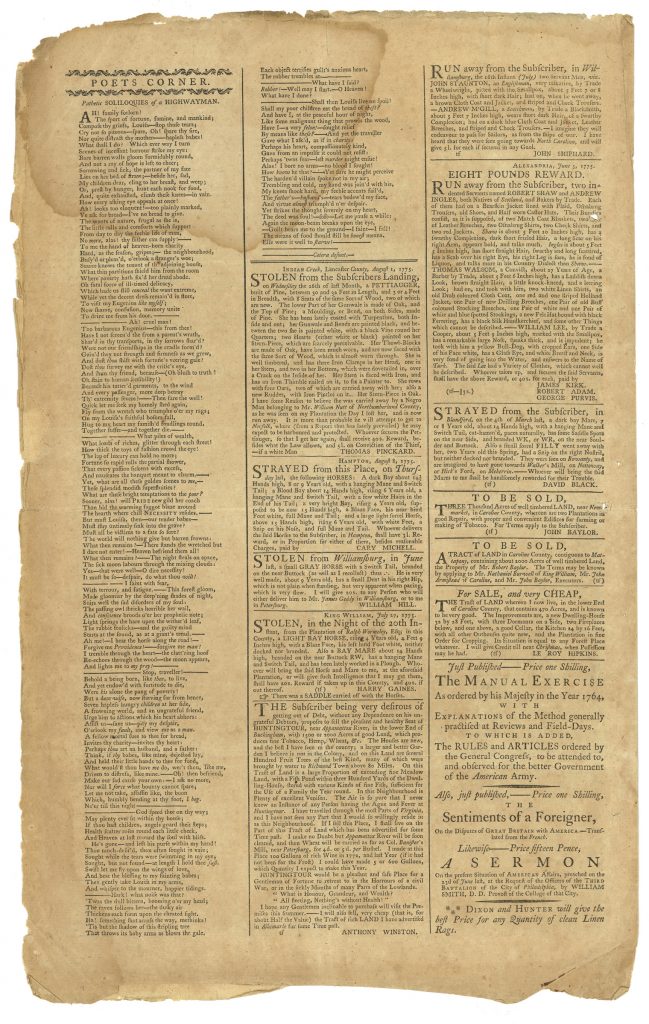One of the newspapers featured in Reporting the Revolutionary War was the Virginia Gazette dated August 26, 1775. In the book, Don N. Hagist describes its uniqueness as it relates to the Battle of Bunker Hill:
A remarkable piece of journalism appeared in Dixon and Hunter’s Virginia Gazette on August 26, 1775. The illustrations that dotted newspapers of the era were mostly generic images complementing advertisements or decorative nameplates similar to the one atop the front page of the Gazette. Skilled hands could typeset text quickly, but it was not feasible to illustrate a current event because of the time required to prepare a printing block. However, based on an eyewitness description, the Virginia publishers ingeniously and quite accurately rendered a schematic diagram of the battlefield of Breed’s Hill using only standard typesetting components.
This is the only known newspaper illustration of a current event during the entire American Revolution and the only illustration in any period source—newspaper, book, magazine, or other—to use this diagrammatic technique.
See all four pages of the issue below (click images to enlarge). And for more information about newspapers of the era, read Todd Andrlik’s interview with Mount Vernon.














4 Comments
By the way, I love the doodle on page three, in the middle of the columns of Virginia Loyalists who have taken out ads that they’re getting the H____ out of the colonies.
I’m guessing the doodle is either Mr. Tucker testing his pen’s ink, or pointing to a list of the (distinguished) men of Virginia’s Committee of Safety. We’ll never know.
While we think this newspaper is pretty interesting and the graphic unusual just think of the impact on the readers back in 1775. They must have been astonished.
John Smith – I too looked at that doodle and pondered whether it was from the pen of St. George Tucker then living in Williamsburg. He’s a relative of mine. I can’t match his accomplishments but I am a doodler.
Hugh – I didn’t know St. George Tucker was related to you, also a co-doodler.
To add weight to the doodle theory vs. an ink cloud pointing at names, let’s err on the side of genetics then, and assume the “D” in DNA stands for Doodler. Case maybe solved.
And I agree that a reader seeing “map illustration” in a newspaper was huge!
Hmmm. I’m a Charles City County Tucker. How much is that worth nowadays?